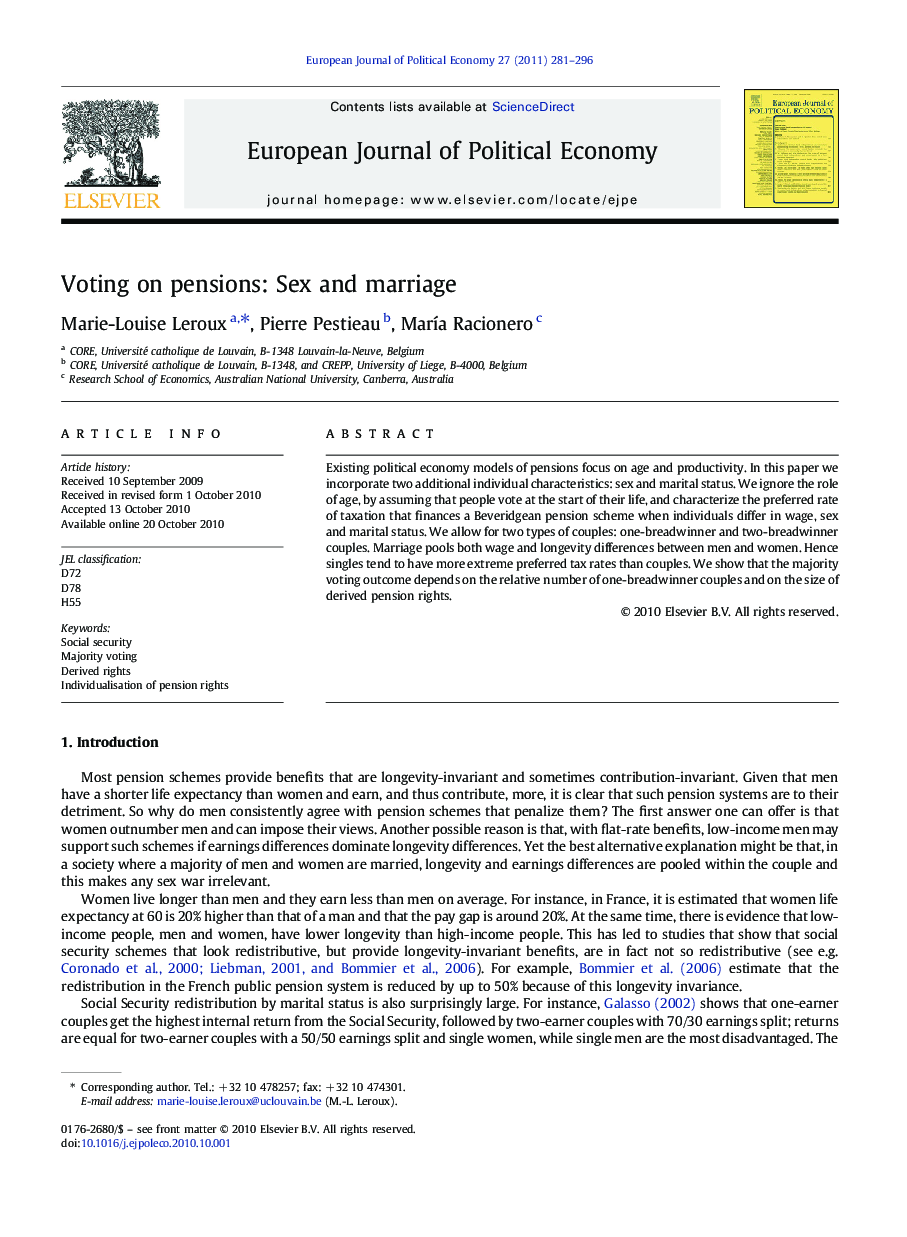| Article ID | Journal | Published Year | Pages | File Type |
|---|---|---|---|---|
| 5068163 | European Journal of Political Economy | 2011 | 16 Pages |
Existing political economy models of pensions focus on age and productivity. In this paper we incorporate two additional individual characteristics: sex and marital status. We ignore the role of age, by assuming that people vote at the start of their life, and characterize the preferred rate of taxation that finances a Beveridgean pension scheme when individuals differ in wage, sex and marital status. We allow for two types of couples: one-breadwinner and two-breadwinner couples. Marriage pools both wage and longevity differences between men and women. Hence singles tend to have more extreme preferred tax rates than couples. We show that the majority voting outcome depends on the relative number of one-breadwinner couples and on the size of derived pension rights.
Graphical AbstractDownload full-size imageResearch Highlights⺠The marital status and the composition of households influence the political support for the pension system. ⺠The majority voting equilibrium tax rate depends on the relative number of one-breadwinner couples and on the size of derived pension rights. ⺠The individualization of pension rights should lead to reduced payroll tax levels. ⺠An increase in the proportion of two-breadwinner couples leads to an increase in the equilibrium tax rate, if derived rights are low.
